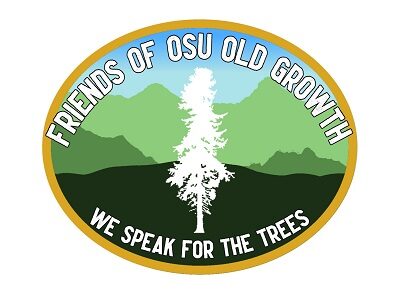DEADLINE FOR PUBLIC COMMENTS ON THE DRAFT PLAN
Oregon State University has released its draft management plan for the McDonald-Dunn Forest. The deadline for public comments is July 18th, 2025
You can find the draft management plan and submit comments here.
You can also email your comments to: McDonaldDunnPlan@oregonstate.edu
To have a bigger impact, please consider sharing your comments with the OSU President and Trustees: trustees@oregonstate.edu
OSU’s choice to release the plan at the start of the summer break, provide only a scant 30-day review period, and skip any public presentation seem designed to diminish public engagement. We cannot allow their autocratic approach to silence us!
When forests thrive, communities flourish!

Here are some of the primary shortcomings of OSU’s draft plan:
- violates ethical standards of the university by having research forest staff (whose salaries depend on continued logging) play a primary role in developing the plan
- perpetuates clearcutting across at least 40% of the forests instead of shifting to ecological forest management
- allows clearcuts of 40 to 80 acres (“long-rotation” vs. “short-rotation”) compared to the 2005 plan (which limited the size of cuts in the southern portion of the McDonald Forest to four acres in size)
- fails to provide any commitments to reduce or eliminate the widespread burning of logging slash, a major source of pollution and GHG emissions
- relies on continued, widespread use of poisonous herbicides at the discretion of forest managers
- perpetuates fragmentation of the forest by ignoring watersheds and ecological zones of the landscape in land allocations
- diminishes protections for older trees and stands by removing the previous (160-year) cutting limit throughout the forest, giving considerable discretion to OSU’s forest managers to cut older trees
- changes the old-growth reserves to allow logging for a variety of reasons, including “public safety” and to create/maintain, “structural and compositional diversity”
- relies heavily upon (“Woodstock”) forest modeling which is widely regarded as promoting wood fiber production over ecological values
- relies on the relatively low standards of the Oregon Forest Practices Act (OFPA) as the primary constraint for forestry activities
- includes very limited accountability and enforcement standards (other than the OFPA)
- downplays the sequestration of forest carbon while echoing industry propaganda re: carbon storage in wood products
- promotes polluting, ecologically-destructive biomass energy as a “renewable source of energy”
- promotes the false idea that frequent thinning and clearcutting maximizes the sequestration of forest carbon (in violation of well-established science)
- relies on outdated research and flawed surveys which downplayed negative public perceptions of clearcutting
- uses inaccurate modeling which excludes carbon stored in the soil (a major omission skewing the assessment of management scenarios in favor of logging)
- promotes a skewed biodiversity metric which relies on a limited number of taxa, rendering the conclusions arbitrary
- contradicts established scientific research on “wildfire resistance” by relying on an inaccurate model (which showed little difference between scenarios with more mature forest vs. plantation forestry)
- defines forest “stewardship” as simply, “meeting or exceeding all laws“
- fails to define what constitutes “sustainable forestry” and conflates it with sustaining timber production (e.g. stating, “Harvest activities must not cause degradation in forest health and sustainability over time” – while ignoring the damaging impacts of clearcutting)
- reveals an arrogant and unrealistic response to climate change with statements like, “Threats such as climate change…will be actively managed and mitigated as appropriate.“
- promotes misinformation regarding logging money funding research and recreation in the forests (when records show only ~1-2% of logging revenue goes to these uses)
- provides only a modest increase in the older forest classification (from ~4 to 10% of the forest) in defiance of community sentiment which overwhelmingly supports protecting a significant portion of the forest
- portrays public involvement in the planning process in a misleading and biased manner (e.g. by stating the draft plan, “reflects the diversity of ideas brought forth by college, university, and community members during the plan development process in a meaningful way“)
- ignores the substantial community opposition to OSU’s past forest management practices and OSU’s biased approach in the current planning process
- uses modeling that falsely concluded OSU’s continued reliance on even-aged, monoculture tree plantations will increase the resilience of the forests
- claims that the plan will provide accountability, while providing very little in the way of tangible constraints or independent review
- promotes the “Vision, Mission, and Goals” of the research forests – a document developed behind closed doors intended to codify industrial forestry practices throughout OSU’s public research forests

OSU’s draft management plan is a disappointing, traditional approach to managing these public forests. It prioritizes clearcut forestry and revenue generation at the expense of research, education, and community values. It will perpetuate the College of Forestry’s extractive and arrogant approach to managing forests as timber resources, rather than promoting ecological sustainability and community well-being.
